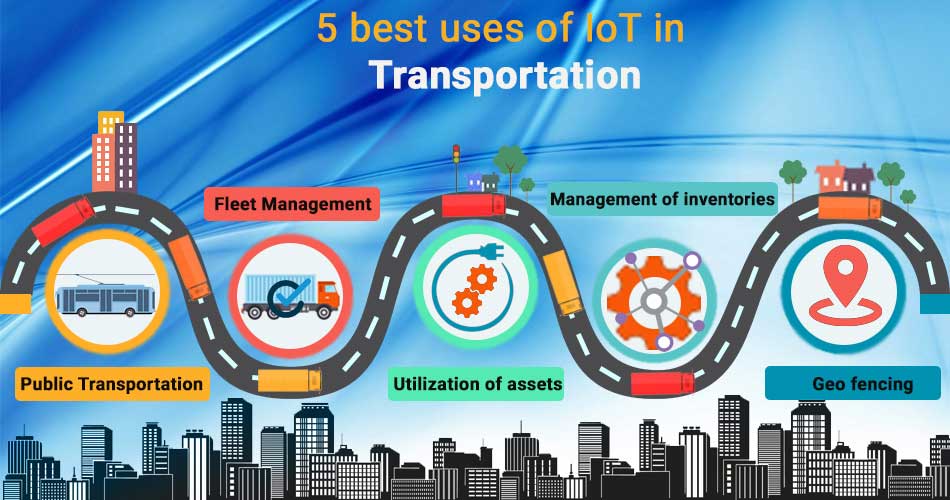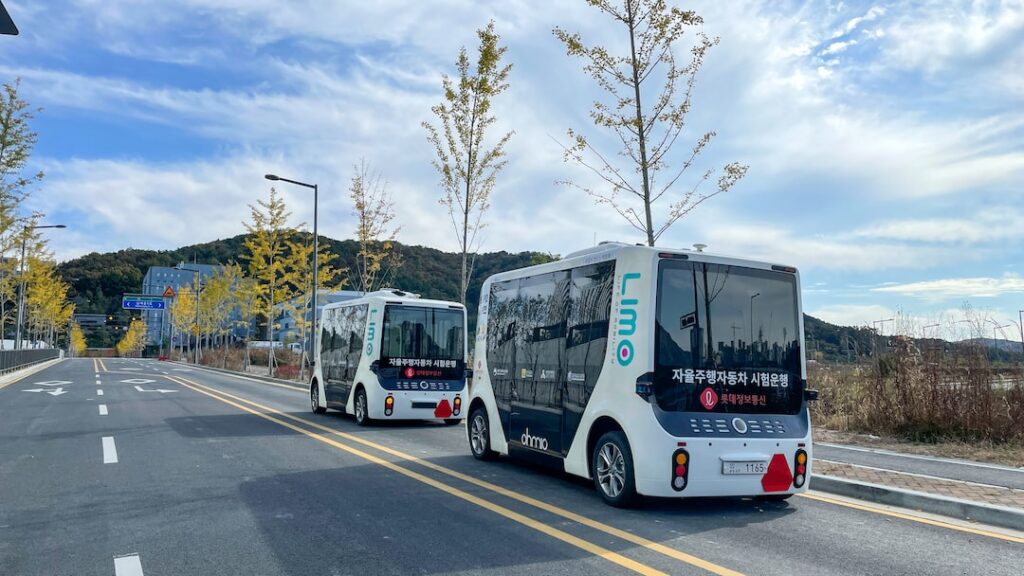The Internet of Things (IoT) is revolutionizing the way transportation systems are managed. By connecting devices, sensors, and vehicles, IoT has enabled increased efficiency in a variety of areas such as fleet management and route optimization. In this article, we take a look at how IoT is used in transportation.
With its ability to collect data from multiple sources at once, IoT is used in transportation for better decision-making processes and cost savings. This technology can also help improve safety by allowing real-time monitoring of traffic conditions or driver behavior on roads across the world.
Let’s explore how IoT is used in transportation today, discuss some challenges that come with implementing it, suggest potential solutions to those issues, and look ahead into what the future holds for IoT within the industry.
Table of Contents
How IoT Is Used in Transportation
IoT technology can provide numerous benefits to the transportation industry, allowing companies to optimize their operations and improve customer experience.
Let’s look at how IoT is used in transportation and the different benefits it brings.
Improved Efficiency
IoT-enabled devices allow for real-time monitoring of vehicle performance and route optimization. This helps reduce fuel consumption, decrease travel time, and increase efficiency in delivery times.
Additionally, automated systems such as self-driving cars can help reduce human error that may lead to delays or accidents.
Reduced Costs
By utilizing connected devices throughout the supply chain process, businesses can track shipments more accurately and efficiently which reduces costs associated with manual labor or third-party services.
Additionally, predictive maintenance solutions can be used to identify potential issues before they occur which saves money on repairs or replacements due to breakdowns.
Improved Safety
With sensors embedded into vehicles and roadsides, drivers are provided with alerts about traffic conditions to avoid collisions or hazardous road conditions. Automated driving systems also help ensure safety by eliminating driver fatigue or distractions while on the roadways.
Furthermore, data collected from these connected devices are used for analytics purposes. These data allow companies to better understand how their vehicles are being operated to make necessary changes for improved safety standards across their fleet of vehicles.

(Source)
IoT applications offer numerous benefits in transportation, such as improved efficiency, reduced costs, and enhanced safety.
Examples of IoT in Transportation
The Internet of Things has different applications in various industries. Let’s explore how IoT is used in transportation with these examples.
Autonomous Vehicles
Autonomous vehicles are becoming increasingly popular in the transportation industry due to their ability to reduce costs and improve safety. These vehicles use a combination of sensors, cameras, and GPS technology to navigate roads without human intervention.
They can detect obstacles in their path and adjust accordingly, allowing for safer driving conditions than traditional cars. Additionally, autonomous vehicles have the potential to reduce traffic congestion by optimizing routes based on real-time data collected from other connected devices such as traffic lights or road signs.
Smart Traffic Management Systems
Smart traffic management systems utilize IoT solutions to monitor road conditions and provide drivers with up-to-date information about current traffic patterns and delays. This allows drivers to make informed decisions about which route is best suited for them at any given time. With this information, drivers can reduce overall travel times while also helping prevent accidents caused by congested roads or poor visibility due to weather conditions.
Furthermore, these systems can be used in conjunction with autonomous vehicle technologies such as lane-changing algorithms. These allow cars to move more efficiently through intersections without having to stop at red lights or wait for other cars ahead of them.
IoT-enabled systems are revolutionizing the transportation industry by making autonomous vehicles, smart traffic management systems, and connected logistics platforms possible.
Challenges of Implementing IoT in Transportation
Security Concerns
With the increasing use of IoT in transportation, there is a greater risk of cyberattacks and data breaches. As more connected devices are used to monitor and control vehicles, systems, and infrastructure, hackers have an increased opportunity to gain access to sensitive information or disrupt operations.
To protect against these threats, organizations must implement robust security measures such as encryption protocols and authentication processes.
Data Privacy Issues
Another challenge associated with implementing IoT in transportation is ensuring that personal data collected from users remains secure. This includes any information gathered from sensors on vehicles or through mobile applications used for navigation or ride-sharing services.
Companies must ensure that they have adequate privacy policies in place to protect user data from unauthorized access or misuse.
Upgrading Infrastructure
For IoT technologies to be effective in transportation applications, existing infrastructure must be upgraded with new hardware and software components capable of supporting these systems.
This can be costly depending on the size and scope of the project, but it is necessary if organizations want their solutions to work properly over time without experiencing technical issues due to outdated equipment or software versions.
The challenges of how IoT is used in transportation are significant, but there are potential solutions that can be implemented to overcome them.
Overcoming Challenges in IoT Transportation
How IoT is used in transportation also presents several challenges. There are some ways to overcome these challenges.
Increased Cybersecurity
To ensure the successful adoption and use of these technologies, increased cybersecurity measures and regulations must be put into place to protect data privacy. This includes the development of secure authentication protocols for access control as well as robust encryption methods for protecting data while in transit or at rest.
Additionally, improved data storage and accessibility solutions should be implemented to allow users to securely access information from any device with an internet connection. Cloud-based storage solutions can provide scalability and flexibility while ensuring that all user data remains safe and secure.
Support for Infrastructure
Government funding may also be necessary for infrastructure upgrades required for the successful implementation of IoT technology in transportation systems. For example, many cities lack the necessary fiber optic cables needed to support high-speed communication networks that are essential for transmitting large amounts of data quickly between connected devices.
Government investment could help bridge this gap by providing resources to upgrade existing infrastructure or build new ones where needed.
Conclusion
IoT is revolutionizing the transportation industry by providing a wide range of benefits such as improved safety, increased efficiency, and cost savings. Examples of how IoT is used in transportation include connected vehicles, smart traffic management systems, and automated logistics.
Despite these advantages, there are still challenges that need to be addressed before the full potential of IoT can be realized in transportation. These include security concerns, data privacy issues, and scalability problems. However, with the right solutions in place – such as secure authentication protocols and robust cloud-based infrastructure – these obstacles can be overcome.





